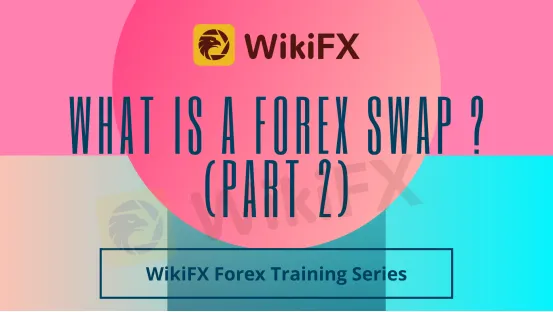简体中文
繁體中文
English
Pусский
日本語
ภาษาไทย
Tiếng Việt
Bahasa Indonesia
Español
हिन्दी
Filippiiniläinen
Français
Deutsch
Português
Türkçe
한국어
العربية
What is a Forex swap ? (Part 2)
Abstract:When market conditions are right, traders often take a position actively in a currency with the highest corresponding interest rate ...
Previous part : https://cutt.ly/kj0LSsL

What is the carry trade?
When market conditions are right, traders often take a position actively in a currency with the highest corresponding interest rate, and “fund” the transaction by short selling a currency with a lower interest rate, then deduct the positive interest differential. This is called the carry trade. In fact, trader keeps his position to recover the differential between interest and swap rate. The carry trade technique is an important part of the Forex landscape and can be a primary consideration for many hedge funds.
Why do brokers charge swap fees?
At some brokers, they provide their clients with the ability to trade price changes actively in global currency markets without having any interest in taking physical delivery of the traded currency. So when we enter a leveraged Forex position, it is an open and indefinite settlement in fact. This means that as a trader, you decide when you want to close a position by using a stop-loss, or other form of position management, and as a counterparty, brokers use the rollover times to calculate finance charges instead of delivery or receipt of physical currency.
How does settlement in the underlying currency spot market work ?
In the underlying market, spot forex trades tend to settle two business days after the trade date (T+2). If an institution buys EUR/USD on the spot foreign exchange market, it will receive EUR at the agreed rate two days after the trade day. There are some exceptions to this rule, for example, USD/CAD which settles on the day after the trade day (T+1).
What is a Tom/Next?
Tom/Next swaps are fully tradable financial instruments. Their rates fluctuate on the basis of expectations of monetary policy and other forces, such as supply, demand and liquidity, which influence the market. Institutions often seek to delay settlements by entering into a Tom/Next.
Example of a Tom/Next swap
Suppose a trader buys a EUR/USD contract (with a notional value of €100,000), but for some reason, he wants to delay settlement for a day. The next day, the counterparty exchanges the €100,000 again with the trader for the following day (“Next”) at the rate of previous transaction, plus the Tom/Next market rate. Therefore, the settlement is postponed for one day, the trader's exchange rate is actually adjusted for the Tom/Next market exchange rate.
Some brokers are replicating this process exactly because of the way they manage their client flows with their hedge banks. This means that the cost (or credit) of the rollover and postponement of the settlement is replicated to your account. If you decide to hold a position after the rollover time of 5:00 p.m. New York time (or 7:00 a.m. Eastern time), you will pay or earn the Tom/Next fee on your nominal position, including any profit or loss.
Please note that in the physical world of Forex, the previously agreed opening price is adjusted according to swap rate. In leveraged Forex trading, there is a simple cash adjustment to your account

(To be continued ... )
Disclaimer:
The views in this article only represent the author's personal views, and do not constitute investment advice on this platform. This platform does not guarantee the accuracy, completeness and timeliness of the information in the article, and will not be liable for any loss caused by the use of or reliance on the information in the article.
Read more

FBS Joins Two Prestigious Financial Events by the End of 2024
FBS is thrilled to announce our participation in two major financial events in Asia – iFX Expo Asia 2024 and Traders Fair Davao!

FBS IB Program Named the Best Globally
The FBS Partnership Program earned the title of the Best Introducing Broker Programme 2024 from the World Finance Awards.

FBS Ranked Among Top 5 Best Brokers by FXStreet
FBS has been recognized as one of the best Forex brokers in 2024 by FXStreet!

FBS Increases Leverage on U.S. Indices to 1:500
FBS is excited to announce a significant update in trading conditions for our clients: starting from August 5th, 2024, the leverage on major U.S. indices, including US30, US100, and US500, is increased from 1:200 to 1:500.
WikiFX Broker
Latest News
How to Automate Forex and Crypto Trading for Better Profits
Is Infinox a Safe Broker?
How Did the Dollar Become the "Dominant Currency"?
Is Your Zodiac Sign Fated for Stock Market Success in 2025?
Currency Calculator






